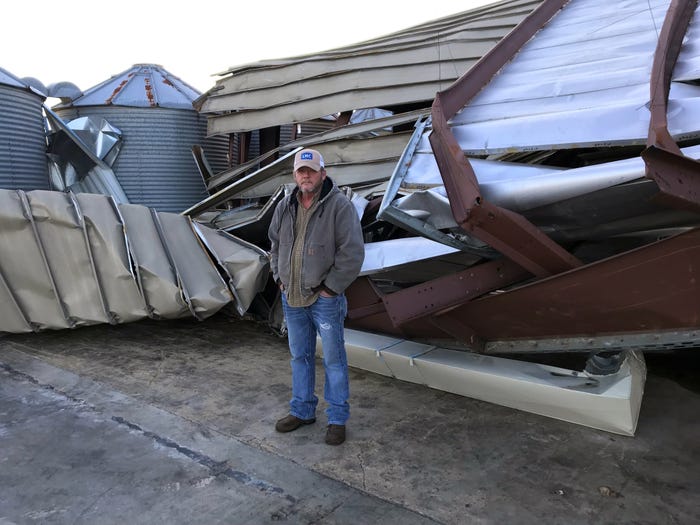
Tommy Hamilton stands before what’s left of the Florida Foundation Seed Producer’s Marianna, Fla, warehouse on Nov. 15.
Tommy Hamilton’s wife told him they would not ride out the storm at their house.
He was stubborn at first, “you don’t want to leave your home. You want to stay.” She won the argument, and they rode the storm out at a different location.
The Hamiltons will never live in that house again just outside Marianna, Fla. Hurricane Michael dropped too many trees on the house and the wind blew too much of it away. Uninhabitable. Zeroed out by the insurance adjuster. He's thankful, feels blessed, that they are OK.
(EDITOR’S NOTE: This article is part of series we’ll put forward over the next few weeks. The idea: To travel to Florida one month later, track the eye of Michael as it went over the Panhandle and up into southwest Georgia as a hurricane. We stopped along the way to talk to farmers.)
Using insurance money, he and his wife are renting a house. She works at the local college and he is the farm and plant manager at the Florida Foundation Seed Producers facility just north of Marianna, which handles newly released University of Florida peanut and small grain varieties, growing out the varieties onsite to increase supply and provide ample stocks for FFSP-licensed companies to then commercially make available to growers.
It employees about 10 people. The facility’s drying sheds, shelling plant and warehouse are now completely out of commission due to heavy damage by the storm. The storm flung one particular grain bin a good quarter of a mile over fencing and into a field.
Hamilton, 53, said they had to move about 1.6 million pounds of FFSP’s peanuts to warehouses in Levy County, about four hours south down the peninsula. Hopes are to have the place back up and running by next season if all goes well. He said every single effort will be made to make that happen.
Hamilton’s family is still in limbo on long-term living arrangements, but he has a bit of land south of Marianna and maybe that’s where he’ll build a new home.
What happened to the Florida Panhandle the second week of October had never happened before. Not on this scale. Words and pictures can come close but do not capture the real-life damage remaining in the area.
Looking out of his truck’s windshield at the twisted remains of drying sheds, Hamilton said, it’s hard now to picture it, but things will get better. They won’t be the same, though. “It is something that sure will humble you.”
(Another EDITOR'S NOTE: In this photo gallery, you'll see Hamilton and what is left of the FFSP in pictures taken Nov. 15. Toward the end of the slide show, you'll see pictures taken by University of Florida agricultural specialists who assisted in gathering data and documentation of damage only a few days after the storm passed over Jackson County.)
About the Author(s)
You May Also Like






